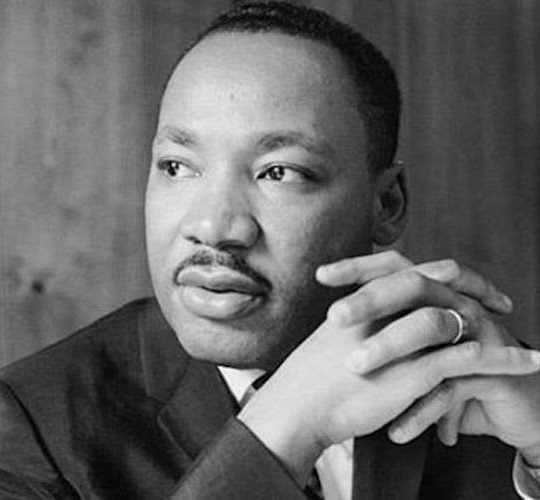by Dr. Paul T. Criss, Ph.D.
Dean, Belhaven, Memphis/DeSoto
On October 31, 2017, what do we celebrate? No, the answer is not All Hallow’s Eve. The answer is the 500th anniversary of the Reformation epitomized in Martin Luther’s nailing of 95 Thesis to the door of the Castle Church in Wittenburg. The point was to debate the statements to bring about a greater understanding of Scripture and a greater adherence to what Scripture taught. The Reformers reformed the church by the five solas:
- Scripture Alone (sola Scriptura)
- Christ Alone (solus Christus)
- Grace Alone (sola gratia)
- Faith Alone (sola fide)
- God’s Glory Alone (soli deo Gloria)
The first principle of Scripture Alone sparked a hunger for knowledge and a reformation, not only of the church, but of education as well. The following is a summary the great research of Hugh Whelchel (https://tifwe.org/how-the-reformation-changed-education-forever/), David Murray, William Boice, and R.B. Peery (Luther’s Influence in Education).
Martin Luther has been called “the father of modern education” because he was almost as great a reformer of education as he was of religion. John Calvin was known for reforming higher education. The Reformation took salvation out of the hands of the clergy and placed it, under God, in the hands of each individual. This necessitated each individual possessing the potential to have a Holy Spirit illuminated understanding of Scripture. It also directed Christian belief away from the dictates of the church and vested it in the Word of God; to teach each person to derive their interpretation of the Bible, not from the church or clergy, but through personal prayerful investigation of God’s revealed Word. All of this required that each person be able to read Scripture him or herself. It also meant that each individual must learn to read and to think clearly and critically leading to a reformation in education. The reformer’s concern did not stop at literacy; they were interested in both the theory and practice of education as well.
In nearly all of this writings, Luther references better education; however, his principles are clearly outlined in the letter “To Mayors and Alderman of the cities of Germany in Behalf of Christian Schools” (1524) and his sermon on “The Duty of Sending Children to School” (1530). The following ideas draw heavily from these writings unless otherwise noted.
Education for Everyone
Prior the Reformation, education was strictly the purview of the clergy and aristocrats, but the reformers believed that education should be available to everyone. The schools they started were the first, in line with Jesus and Paul, to educate girls and desired that every child of God reach their full potential for God’s glory. Luther expressed, “Even if there were no soul, and men did not need schools and languages for the sake of Christianity and the Scriptures; still, for the establishment of the best schools everywhere, both for boys and girls, this consideration is of itself sufficient, namely, that society, for the maintenance of civil order and the proper regulation of the household, needs accomplished and well-trained men and women” (1524). Joel Beeke in Calvin for Today states, the later reformers like John Calvin “opened the way for people to raise themselves by education and by the diligent use of their knowledge and abilities.”
Who is Responsible for Education?
The reformers taught the parents and the church held the primary responsibility of educating children under the authority of God’s Word (with possible support from the state). Luther and Calvin personally started numerous schools with existing churches. Parents were expected to reinforce instruction at home and church leaders would assess the instructional process and a student’s progress throughout the school year. Luther encouraged the state to provide stability to education by undertaking and supporting primary and secondary schools. He said, “Therefore it will be proper for the civil authorities to exercise the greatest care and industry in regard to the young; for, since the interests of the city are committed to their trust, they would not do well before God and the world if they did not seek with all their might to promote its prosperity. Now, the prosperity of a city does not consist alone in the vast treasures, strong walls, beautiful houses, large supplies of muskets and armor; yea, when these things are found, and fools exercise authority, it is so much worse for the city. The best and richest treasure of a city is that it have many pure, learned, intelligent, honest, well-educated citizens, for these can collect, preserve, and properly use whatever is good” (1524).
Education Should Be Theological & Practical
The reformer’s perspective on the sovereignty of God over all creation affected how they approached the study of all topics. All truth is God’s truth and theology, as the queen of the sciences, unifies all knowledge and understanding under the guiding principles of Scripture. As Mark Thompson wrote in Engaging with Calvin, “According to Calvin, science was a gift of God, created for benefit of mankind. The real source of natural knowledge was the Holy Spirit. Whoever dealt with it acknowledged God, obeyed the call of God, and focused on God’s creation. Thus, biology was also theology.” The reformers knew that the Reformation movement would grow through the study of arts and sciences through the lens of scripture. They also thought of education as a way to prepare students more efficiently to easily perform their daily duties in life. In some way even the concept of adult studies was encouraged, or at least schools at hours which would not interfere with the work schedule of those obligated to earn their living; these guidelines were recommended to authorities of both the church and state. Luther stated students should “spend an hour or two a day in school, and the rest of the time at work at home, learning some trade and doing whatever is desired, so that study and work go together…” (1530).
Education Requires Gifted Teachers
The reformers viewed the position of teacher as very important. They actually viewed teachers as officers and servants of the church. The call to “Scripture Alone” required teachers who would teach how to read and understand the Word of God. Because of this, they required teachers not only to have expertise and education in their discipline, but also to obtain a degree in theology and to demonstrate high character. They also thought that teacher’s compensation should be high enough to provide education to the poor who could not afford to pay for their own instruction.
Education and Citizenship of Church & State
John Calvin founded the Genevan Academy. It became the model for colleges and universities for several centuries. Hugh Whelchel describes, “the Academy was a university that offered higher learning in a number of subjects, including theology, training pastors, and those preparing for other vocations.” The Academy also viewed its purpose to prepare those who would serve in the church and in government. Historians affirm that wherever followers of the Reformation went, they founded churches, school, and colleges. In fact, many of America’s early colleges, like Yale, Harvard, and Princeton, were originally based on the model set by the Genevan Academy.
Broad & Rich Curriculum with Best Teaching Principles
Luther advocated for a broader range of subjects to be taught to students based on liberalis study that taught students to contribute to society rather than servilus education that simply taught one skill to keep people in servitude. He retained the normal course of study for the clergy (Latin, Greek, and mathematics), but he also recommended Hebrew, more mathematics and additionally he insisted on nature studies, the sciences, rhetoric, gymnastics, history, and music. He realized the cultural power and practical value of music. Of course, Luther gave priority to the Christian teaching in all educational endeavors, so perhaps he was one of the first reformers to teach the Christian Worldview (along with Calvin). By using the Bible and the Catechism, he focused on developing the heart as well as the head. He also insisted on teaching being in the vernacular. He believed that students should not be subject to the medieval tradition of harshness, but rather should be dealt with gently and kindly, being ruled by love and not fear so they would find joy in learning. He also began the tradition of Academic Freedom by allowing liberty and opportunity for self-expression and questions within the classroom.
What Does This Mean for Us Today?
Scriptural reformation and education are the keys to cultural transformation. James Montgomery Boice in his book Whatever Happened to the Gospel of Grace? Recovering the Doctrines that Shook the World illustrates for us: “Here is a particularly striking example. In 1535 the Council of Two Hundred, which governed the city of Geneva, Switzerland, decided to break with Catholicism and align the city with the Protestant Reformation. They had very little idea what that meant. Up to this point the city had been notorious for its riots, gambling, indecent dancing, drunkenness, adultery, and other vices. The citizens of Geneva would literally run around the streets naked, singing indecent songs and blaspheming God.
They expected this state of affairs to continue after they had become Protestants, and the Council did not know what to do. It had passed regulation after regulation designed to restrain vice and remedy the situation. They thought becoming Protestant would solve the problem. But that did not do any good either. Genuine moral change never comes from the top down by law, but from the bottom up through a transformed people. Geneva’s morals continued to decline.
But the Council did one thing right. They invited John Calvin to become Geneva’s chief pastor and preacher. He arrived in August of 1536, a year after the change. He was ignored at first, even by the Council. He was not even paid the first year. Besides, his first preaching proved so unpopular that he was dismissed in early 1538 and went to Strasbourg, where he was very happy. He had no desire to go back to Geneva. Yet, when the situation in Geneva continued to deteriorate, public opinion turned to him again and, driven by a sense of duty, Calvin returned. It was September 13, 1541.
Calvin had no weapon but the Bible. From the very first, his emphasis had been on Bible teaching, and he returned to it now, picking up precisely where he had left off three and a half years earlier. Calvin preached from the Bible every day, and under the power of that preaching the city began to be transformed. As the people of Geneva acquired knowledge of God’s Word and were changed by it, the city became, as John Knox called it later, a New Jerusalem from which the gospel spread to the rest of Europe, England, and the New World. This change made other changes possible. One historian wrote:
Cleanliness was practically unknown in towns of his generation and epidemics were common and numerous. He moved the Council to make permanent regulations for establishing sanitary conditions and supervision of markets. Beggars were prohibited from the streets, but a hospital and poorhouse were provided and well conducted.
Calvin labored zealously for the education of all classes and established the famous Academy, whose influence reached all parts of Europe and even to the British Isles. He urged the council to introduce the cloth and silk industry and thus laid the foundation for the temporal wealth of Geneva. This industry…proved especially successful because Calvin, through the gospel, created within the individual the love of work, honesty, thrift and cooperation. He taught that capital was not an evil thing, but the blessed result of honest labor and that it could be used for the welfare of mankind. Countries under the influence of Calvinism were invariably connected with growing industry and wealth…. It is not mere coincidence that religious and political liberty arose in those countries where Calvinism had penetrated most deeply.
There probably has never been a clearer example of extensive moral and social reform than the transformation of Geneva under the ministry of John Calvin, and it was accomplished almost entirely by the preaching and teaching of God’s word.”
It has been said that we are to ever be reforming. For Christians, this means that we compare our beliefs and practice to the Word of God; it we do not line up to what the Bible says we reform or change to meet the biblical standard. May we, in obedience to Christ, follow in the steps of the reformers and be agents of ecclesial and cultural transformation through our efforts in education.
Recommended Resources
An excellent and accessible book on the Reformation is Erwin Lutzer’s Rescuing the Gospel: The Story and Significance of the Reformation (Grand Rapids, Michigan: Baker Books, 2016). If you are looking for ideas on how to celebrate the 500th Anniversary or incorporate it into your class, investigate the following sites:





